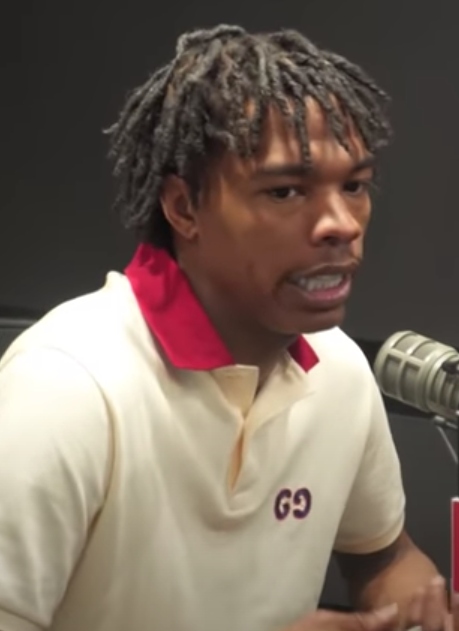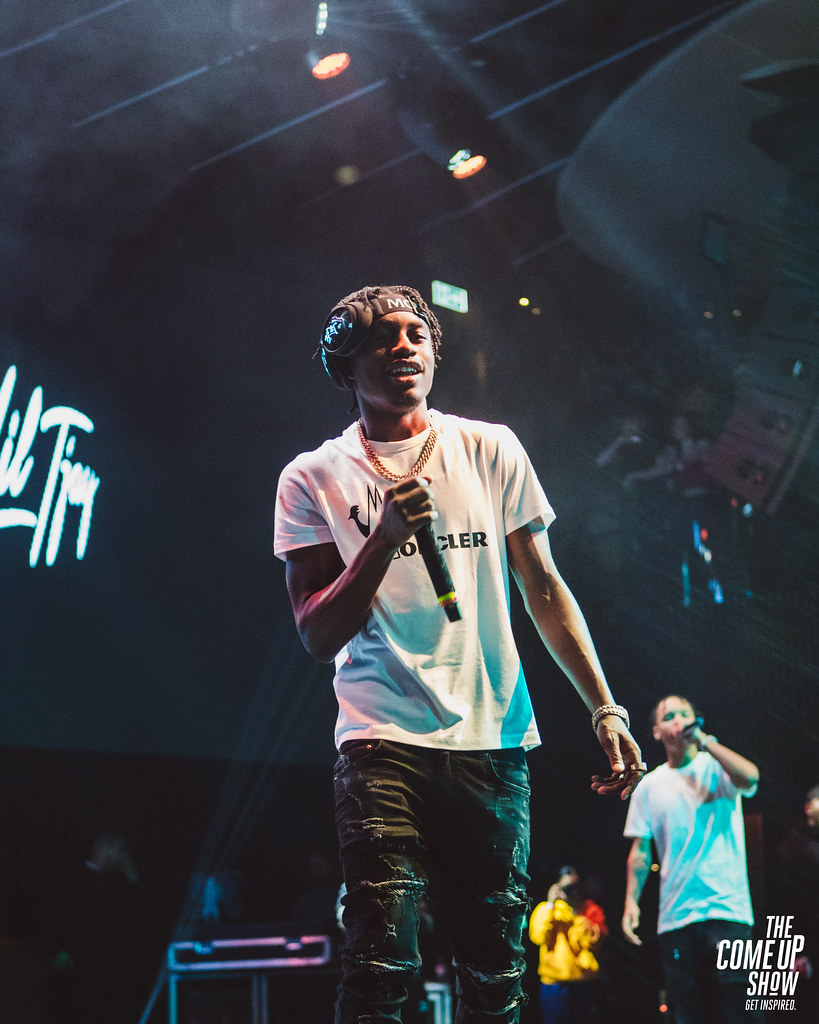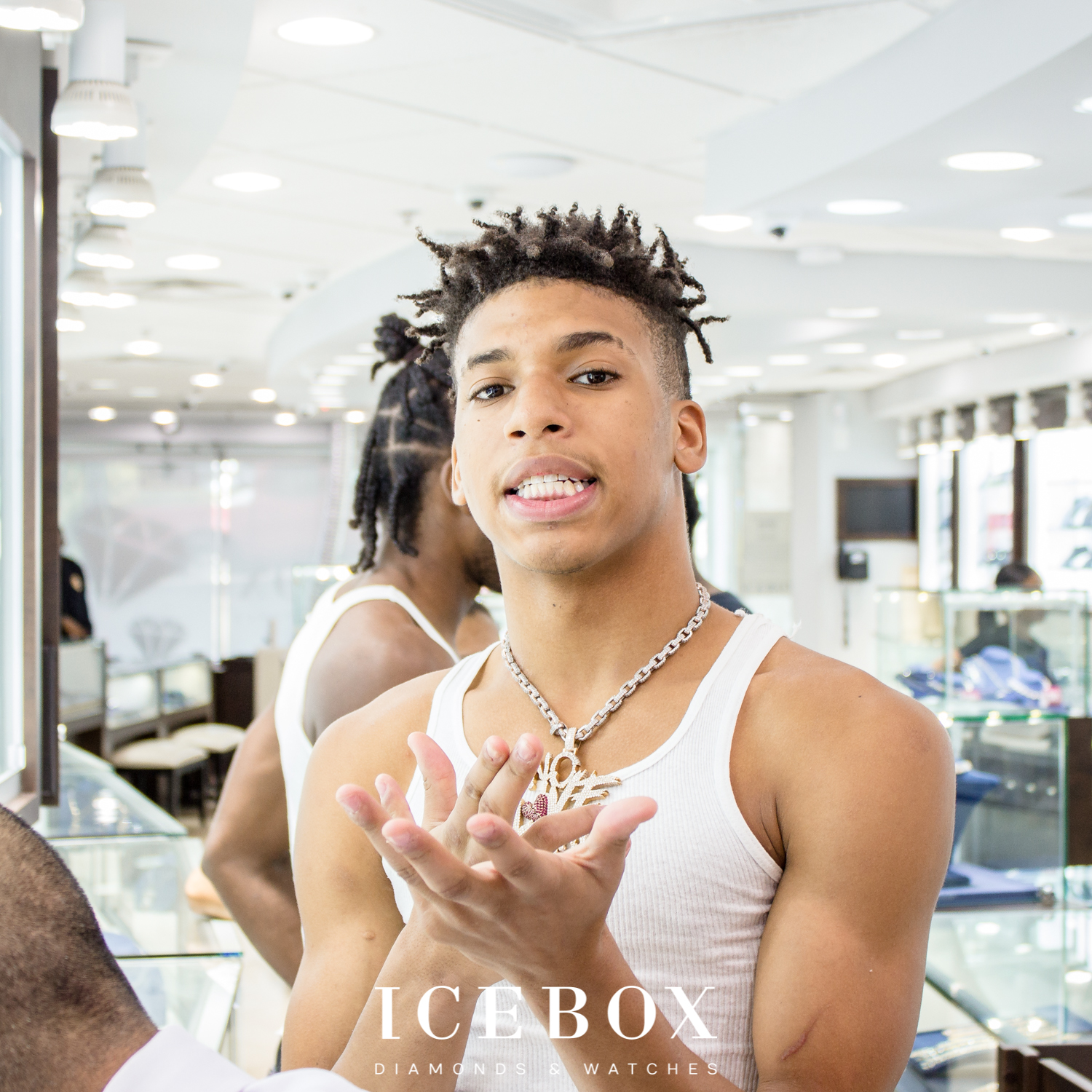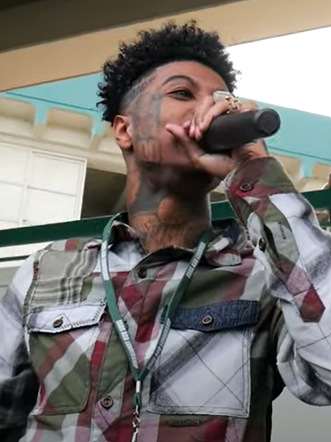 BeatstarsMartin BeatsType BeatsServicesBUY Beats from YouTube
BeatstarsMartin BeatsType BeatsServicesBUY Beats from YouTube BeatstarsMartin BeatsType BeatsServicesBUY Beats from YouTube
BeatstarsMartin BeatsType BeatsServicesBUY Beats from YouTube
1. Use powerful and deep drum sounds, such as 808 bass drums, and use drum machine loops.
2. Use unique synthesizer sounds that complement the drums well, such as a distorted bass or a high-tension synth melody.
3. Use long snare drums in the rhythm to create a strong rhythmic dynamic.
Incorporate some powerful and heavy piano or other instrument sounds that create high dynamics and defining chords.
4. Pop Smoke's sound is all about creating tension and dynamic shifts, so use rhythmic changes, emphasis, and interruptions, as well as intense volume to create the main features of the music.

1
. Use trap-style drums and percussion, including snappy snares, hi-hats, and trap-style kicks.
2. Incorporate melodic elements such as piano chords, synth plucks, and bells, that create a catchy melody.
3. Use simple but effective melodies with a lot of repetition, so that they're easy to remember and sing along to.
4. Create a dynamic rhythm by using rhythmic changes, breakdowns, and buildups, to keep the listener engaged.
5. Use atmospheric and ambient sounds in the background to give the beat a more complex and interesting texture.
Overall, the key to creating a Lil Baby type beat is to focus on creating a catchy melody, using dynamic rhythm changes, and incorporating modern production techniques like autotune and vocal effects.

1. Use piano and guitar melodies, as they are prominent in Lil Tjay's music.
Incorporate a trap-style drum pattern, with punchy kicks, snares, and hi-hats.
2. Use atmospheric sounds and vocal samples to create a layered and textured sound.
3. Create a dynamic rhythm with breakdowns, buildups, and tempo changes, to keep the listener engaged.
4. Experiment with different chord progressions and melodies to create a unique sound that stands out.
Overall, the key to creating a Lil Tjay type beat is to focus on using melodic elements, trap-style drums, and atmospheric sounds to create a layered and textured sound. Additionally, incorporating dynamic rhythm changes and experimenting with chord progressions can help create a unique sound.

1. Use fast-paced and aggressive drum patterns, with a lot of snappy snares, kicks, and hi-hats.
2. Incorporate repetitive and catchy melodies, such as synth arpeggios or piano riffs.
3. Use a heavy bassline that emphasizes the rhythm of the drums.
4. Experiment with tempo changes, breakdowns, and buildups to create a dynamic and engaging beat.
Overall, the key to creating an NLE Choppa type beat is to focus on using fast-paced and aggressive drum patterns, catchy melodies, and heavy basslines to create an energetic and engaging beat. Additionally, incorporating vocal samples and effects can help create a unique sound for the vocals.

1. Use emotional and introspective melodies, such as piano or guitar chords.
2. Incorporate trap-style drums, with punchy kicks, snares, and hi-hats.
3. Use a simple but effective melody that is easy to remember and sing along to.
4. Create a dynamic rhythm with breakdowns, buildups, and tempo changes, to keep the listener engaged.
Overall, the key to creating a Polo G type beat is to focus on using emotional and introspective melodies, trap-style drums, and dynamic rhythm changes to create a memorable and engaging beat. Additionally, incorporating vocal samples and effects can help create a unique sound for the vocals.

1. Use dark and moody melodies, such as synth or piano chords.
2. Incorporate trap-style drums, with heavy 808s, punchy kicks, and hi-hats.
3. Use atmospheric sounds and vocal samples to create a layered and textured sound.
4. Experiment with tempo changes, breakdowns, and buildups to create a dynamic and engaging beat.
Overall, the key to creating a Future type beat is to focus on using dark and moody melodies, trap-style drums, and atmospheric sounds to create a layered and textured sound. Additionally, incorporating vocal effects and sound effects can help create a unique and dynamic beat.

1. Use smooth and melodic chord progressions, such as piano or guitar melodies.
2. Incorporate trap-style drums, with a snappy snare and hi-hats.
3. Use atmospheric sounds, such as pad or synth sounds, to create a layered and textured sound.
4. Experiment with tempo changes, breakdowns, and buildups to create a dynamic and engaging beat.
Overall, the key to creating a Drake type beat is to focus on using smooth and melodic chord progressions, trap-style drums, and atmospheric sounds to create a polished and modern sound. Additionally, incorporating vocal samples and effects can help create a unique sound for the vocals.

1. Use dark and ominous melodies, such as piano or synth chords.
2. Incorporate trap-style drums, with heavy 808s, punchy kicks, and hi-hats.
3. Use vocal samples and adlibs to add texture and energy to the beat.
4. Create a dynamic rhythm with breakdowns, buildups, and tempo changes, to keep the listener engaged.
Overall, the key to creating a 21 Savage type beat is to focus on using dark and ominous melodies, trap-style drums, and vocal samples to create a moody and atmospheric beat. Additionally, incorporating vocal effects and sound effects can help create a unique and dynamic beat.

1. Use catchy and melodic chord progressions, such as piano or guitar melodies.
2. Incorporate trap-style drums, with a snappy snare and hi-hats.
3. Use vocal samples and adlibs to add texture and energy to the beat.
4. Create a dynamic rhythm with breakdowns, buildups, and tempo changes, to keep the listener engaged.
Overall, the key to creating a Quavo type beat is to focus on using catchy and melodic chord progressions, trap-style drums, and vocal samples to create a polished and modern sound. Additionally, incorporating vocal effects and sound effects can help create a unique and dynamic beat.

1. Use minimalistic and repetitive melodies, such as simple piano or guitar riffs.
2. Incorporate west coast-style drums, with a bouncy kick and snappy snare.
3. Use vocal samples and adlibs to add texture and energy to the beat.
4. Create a dynamic rhythm with breakdowns, buildups, and tempo changes, to keep the listener engaged.
Overall, the key to creating a Blueface type beat is to focus on using minimalistic and repetitive melodies, west coast-style drums, and vocal samples to create a bouncy and energetic beat. Additionally, incorporating vocal effects and sound effects can help create a unique and dynamic beat.

1. Use UK drill-style melodies, such as dark and moody synth or piano chords.
2. Incorporate trap-style drums, with a heavy 808 bass, punchy kick, and snappy snare.
3. Use vocal samples and adlibs to add texture and energy to the beat.
4. Create a dynamic rhythm with breakdowns, buildups, and tempo changes, to keep the listener engaged.
Overall, the key to creating a Central Cee type beat is to focus on using UK drill-style melodies, trap-style drums, and vocal samples to create a dark and moody beat. Additionally, incorporating vocal effects and sound effects can help create a unique and dynamic beat.

1. Use UK drill-style melodies, such as dark and atmospheric synth or piano chords.
2. Incorporate trap-style drums, with a heavy 808 bass, punchy kick, and snappy snare.
3. Use vocal samples and adlibs to add texture and energy to the beat.
4. Create a dynamic rhythm with breakdowns, buildups, and tempo changes, to keep the listener engaged.
Overall, the key to creating an SL type beat is to focus on using UK drill-style melodies, trap-style drums, and vocal samples to create a dark and atmospheric beat. Additionally, incorporating vocal effects and sound effects can help create a unique and dynamic beat.

And don’t worry, we hate spam too! You can unsubcribe at anytime.
created with
Web Design Software .